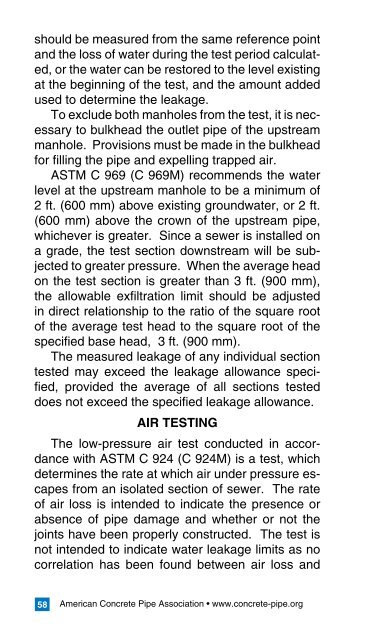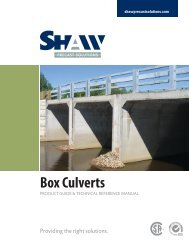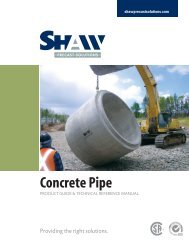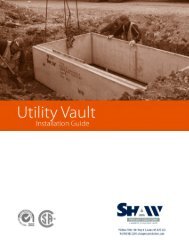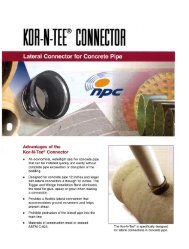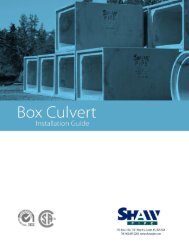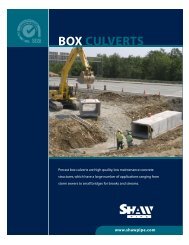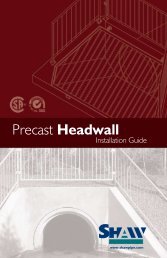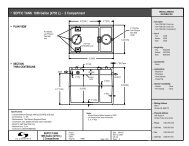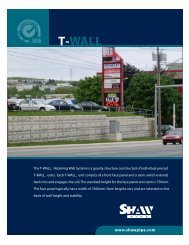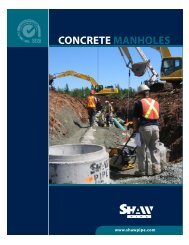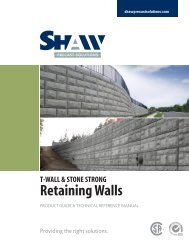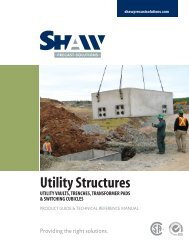Concrete Pipe & Box Culvert Installation - Shaw Precast Solutions
Concrete Pipe & Box Culvert Installation - Shaw Precast Solutions
Concrete Pipe & Box Culvert Installation - Shaw Precast Solutions
You also want an ePaper? Increase the reach of your titles
YUMPU automatically turns print PDFs into web optimized ePapers that Google loves.
should be measured from the same reference pointand the loss of water during the test period calculated,or the water can be restored to the level existingat the beginning of the test, and the amount addedused to determine the leakage.To exclude both manholes from the test, it is necessaryto bulkhead the outlet pipe of the upstreammanhole. Provisions must be made in the bulkheadfor filling the pipe and expelling trapped air.ASTM C 969 (C 969M) recommends the waterlevel at the upstream manhole to be a minimum of2 ft. (600 mm) above existing groundwater, or 2 ft.(600 mm) above the crown of the upstream pipe,whichever is greater. Since a sewer is installed ona grade, the test section downstream will be subjectedto greater pressure. When the average headon the test section is greater than 3 ft. (900 mm),the allowable exfiltration limit should be adjustedin direct relationship to the ratio of the square rootof the average test head to the square root of thespecified base head, 3 ft. (900 mm).The measured leakage of any individual sectiontested may exceed the leakage allowance specified,provided the average of all sections testeddoes not exceed the specified leakage allowance.AIR TESTINGThe low-pressure air test conducted in accordancewith ASTM C 924 (C 924M) is a test, whichdetermines the rate at which air under pressure escapesfrom an isolated section of sewer. The rateof air loss is intended to indicate the presence orabsence of pipe damage and whether or not thejoints have been properly constructed. The test isnot intended to indicate water leakage limits as nocorrelation has been found between air loss and58American <strong>Concrete</strong> <strong>Pipe</strong> Association • www.concrete-pipe.org


